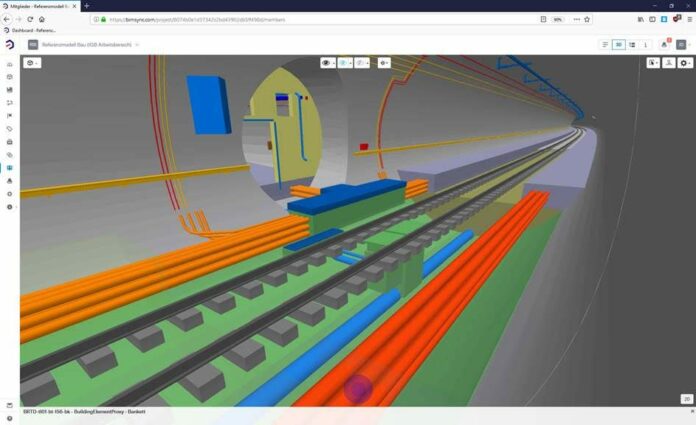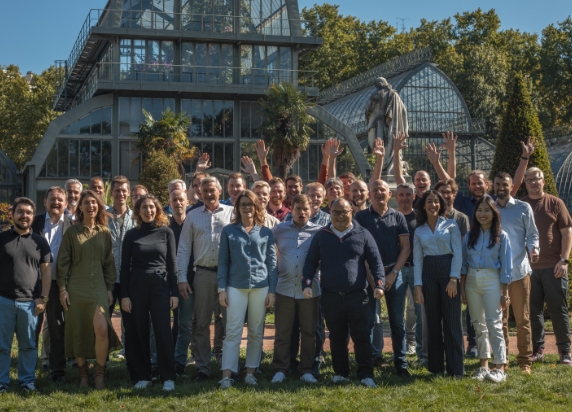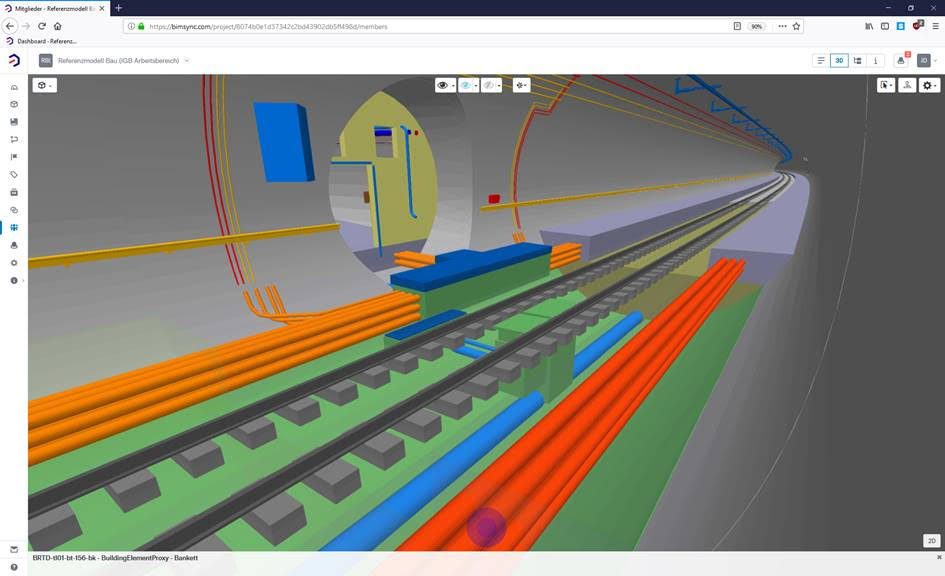
Bruttener tunnel models in Catenda Hub (previously Bimsync)
In August 2017 the Swiss Federal Railways (SBB) awarded the “Vorprojekt” (the preliminary/public approval design) to the consulting engineers joint venture IG Brütt, consisting of ILF Zurich, together with joint venture partners Emch & Berger and Aegerter + Bosshardt. ILF has the lead of the joint venture and also has the overall BIM coordination.
Currently 40 people from the SBB and 7 contributing engineering and architectural companies, are registered as Catenda Hub users in the Brüttener projects – the core group consists of 15 people that use it on a daily basis.
“Catenda Hub (previously Bimsync) has been really good for us. It is really intuitive, a lot of people in the project are using it on a daily basis. It works well, the coordination is intuitive, and it has been fascinating to observe how our workflows are changing with the use of the model as the project hub,” Jonathan Dunn from ILF explains.
BIM creates a new workflow
The SBB required the use of web-based collaboration software. ILF evaluated several web-based coordination platforms. The product of choice was Catenda Hub (previously Bimsync).
“Catenda Hub offered a perfect combination of price, performance, and usability. In addition, it has an open API that will allow us to integrate our models into future applications,” says Dunn.
“In the preliminary design phase that we currently are in, our workflow in Catenda Hub (previously Bimsync) requires us to work in greater detail at an earlier stage than we would have done in our regular workflow, although this requires more effort, it has highlighted issues that may previously have been overlooked. We were originally worried that the complex 10 km long project was too long a stretch to be handled in an open BIM platform, but it has not been a problem at all,” says Jonathan Dunn from ILF.
It is the first time that both the SBB and ILF with its joint venture partners had undertaken a project of this size and nature. For all involved, it has been a journey into unknown territory with an unpredictable outcome.
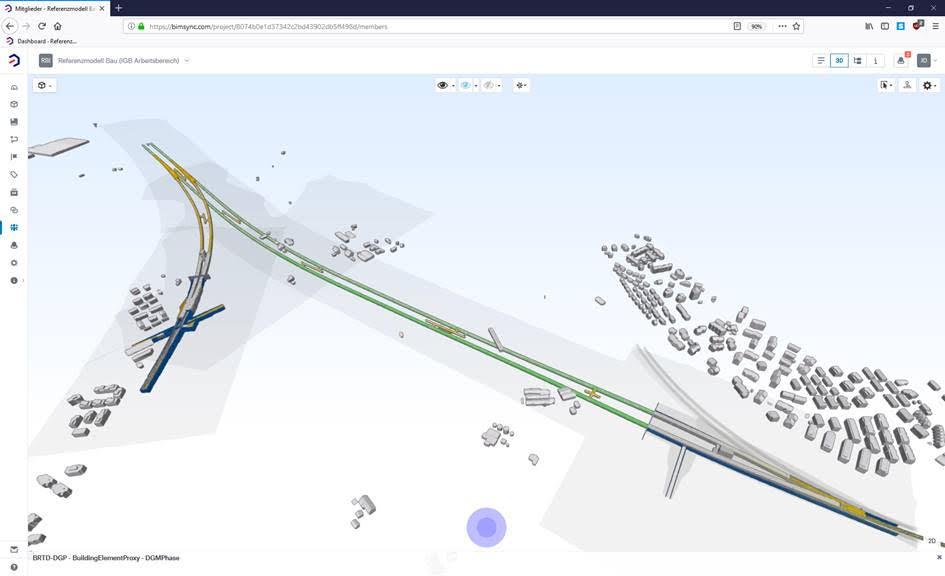
Bruttener tunnel 3D model view in Catenda Hub (previously Bimsync)
“What is so immensely satisfying is that we have been able to solve all the issues as they arose, to create an effective, usable, structured information container for project data and have a fully integrated 3D design process. We have been able to convince ourselves and the client of the value of the approach and our methods. We have been able – essentially from scratch – to develop a sound framework for future projects, that is not a small feat,” Dunn continues.
The conclusions so far are that documentation of the project in BIM is far more structured and rational than a conventional 2D design. The first-hand evidence of the effectiveness of the model as a “single source of truth” for the client and the BIM process is ideally suited to the multidisciplinary nature of railway tunnel projects.
“A positive side effect of BIM planning is that our staff members effectively enjoy it more than 2D design! Modelling can be an absorbing and fascinating process,” says Jonathan Dunn.
A successful BIM Pilot
The original project scope included using a small part of the Brüttener tunnel as a BIM Pilot project. The test run was successfully completed, and on June 2018 the SBB chose to commission and extend the BIM planning to include the total project.
The tunneling industry in Switzerland has an annual capital expenditure of around 2.5 billion Swiss Francs, amounting to approximately 15% of all civil engineering projects or around 4% of the total overall construction expenditure. The SBB is busy developing a BIM strategy, part of which is the implementation of approximately 20 BIM pilot projects. The goal is implementing BIM in all projects in around 2025. These pilot projects involve a variety of projects, from real estate projects to overpasses, platforms, track upgrades, and ancillary structures.
The Brüttener Tunnel was not foreseen as a Pilot project, as the SBB wanting to acquire more experience before taking such a major step. It became a BIM project through the initiative of Josef Sautter, the SBB project manager responsible for the tunnel. In particular, he wanted to test the open BIM approach, an ambitious decision given that so many clients are settling on a closed BIM approach.
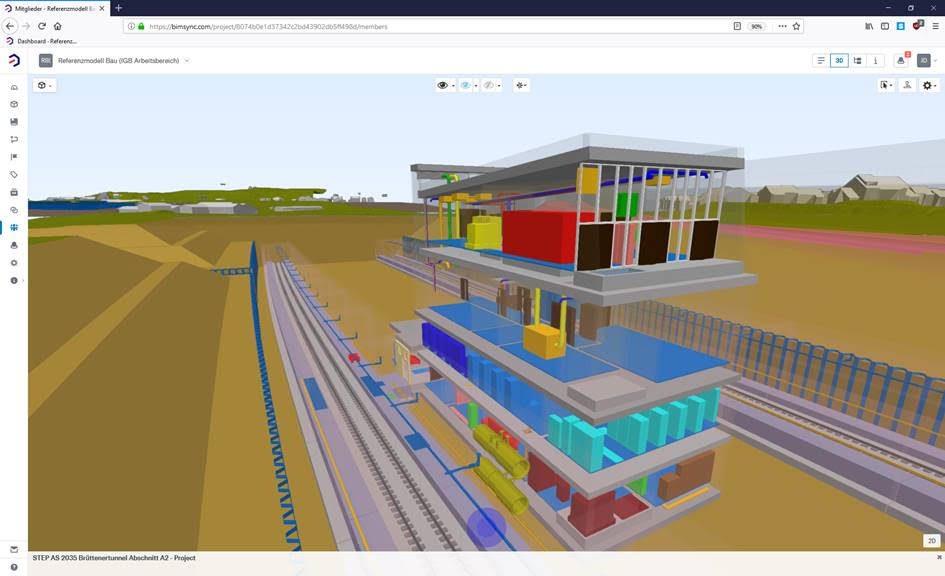
Bruttener tunnel visualization in Catenda Hub (previously Bimsync)
The SBB had a clear preference for open BIM. Open BIM is the universal approach for designing, documenting, and exporting building models based on both proprietary and non-proprietary software certified for open standards and workflow. Open BIM is an initiative of the buildingSMART organization, supported and promoted worldwide by all buildingSMART members, most software vendors and end-users in the AEC industry. The language for exchanging model information is IFC (Industry Foundation Classes). Issues found during the design process are communicated through the common BCF (BIM Coordination Format).
Solving a traffic bottleneck
The Brüttener Rail Tunnel will eliminate a transportation bottleneck and create an efficient Winterthur rail junction. This is part of the Swiss Rail Infrastructure Expansion Step 2035 Strategic Development Programme. Daily more than 120 000 people and 670 trains travel between Zürich and Winterthur. The end result will be a continuous four-track connection between Zurich and Winterthur with a capacity of around 900 trains per day.
The main tunnel contains the twin 8.25 km long single-track tunnels running from Dietlikon to Winterthur and two 900 meters long single-track branch tunnels from Bassersdorf that join the main tunnels at Mülberg. The total project spans close to 10 km.
The tunnel runs primarily through the Zurich freshwater Molasses, a formation of alternating layers of sandstone, siltstone, limestone, and marls. The Dietlikon and Bassersdorf portals are in lake deposits overlying glacial moraines. The Winterthur portal is in moraine. The main tunnels will be excavated by two 10 meters in diameter earth pressure balance (EPB) tunnel boring machines (TBM), and the branch tunnels will be excavated conventionally with appropriate support measures in the soft ground portions. The tunnels will be excavated from three construction sites at Dietlikon, Bassersdorf and Winterthur Töss. There are three technical buildings at each portal and 17 cross-connections that also serve as electrical substations.
BIM processes in Switzerland have been adopted primarily in building and architectural construction, but through the Brüttener Rail Tunnel project, BIM is seriously being introduced into the Swiss world of infrastructure as well.
